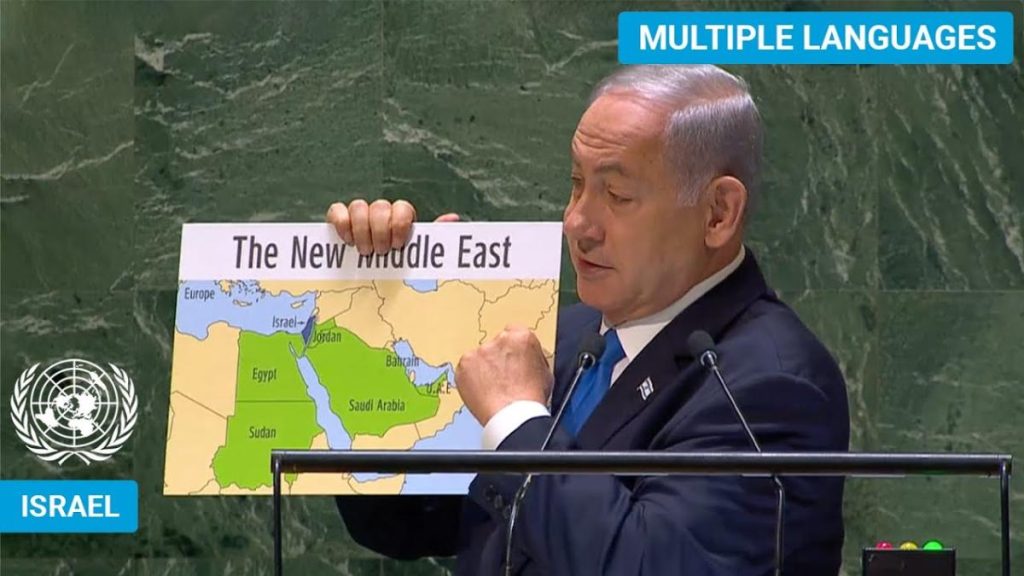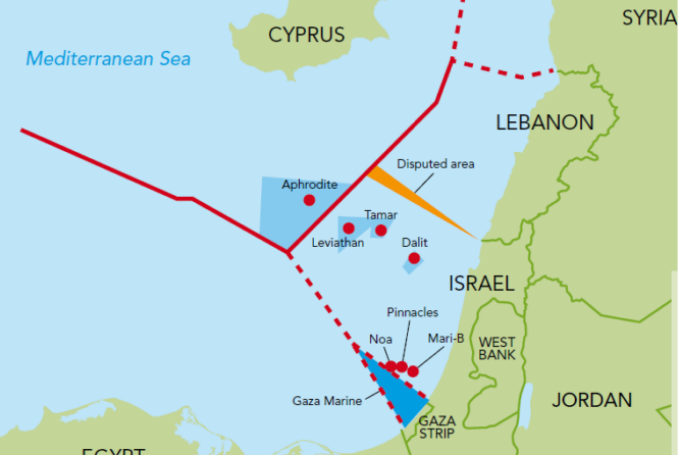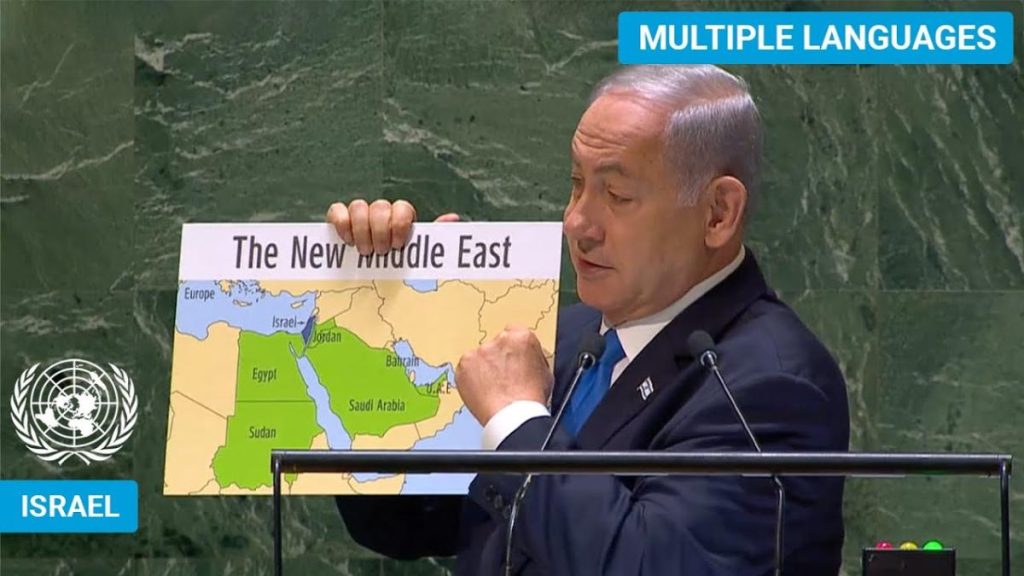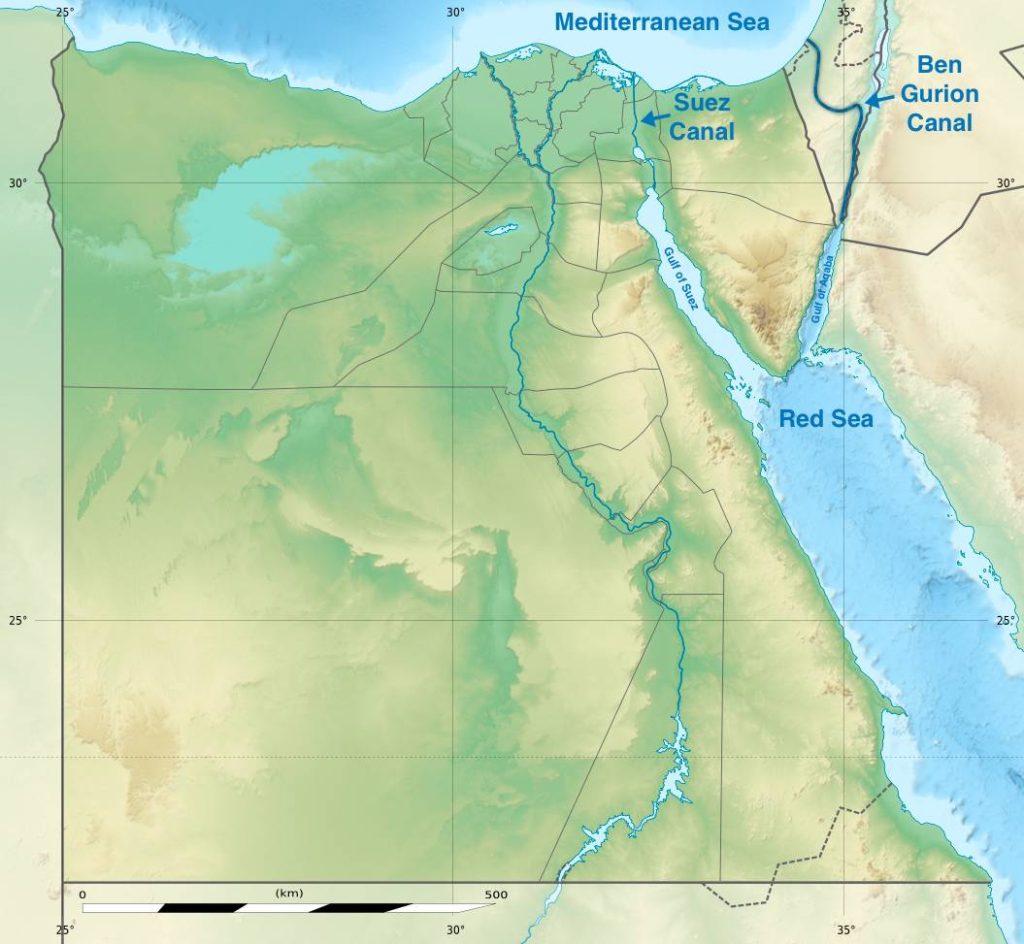On 7th October 2023 the military wing of Hamas, the Izz ad-Din Al-Qassam Brigades, led an attack on southern Israel. The evidence strongly suggests that the operation, called Al-Aqsa Flood, or Al-Aqsa Deluge, was a false flag attack that could not have unfolded as it did without assistance from within the Israeli state. Apparently, the Israeli government, or elements within the government, let it happen on purpose (LIHOP).
The Israeli government’s response to the Hamas attack has been so horrific that the South African government brought a case before the International Court of Justice (ICJ), accusing Israel of committing genocide in Gaza.
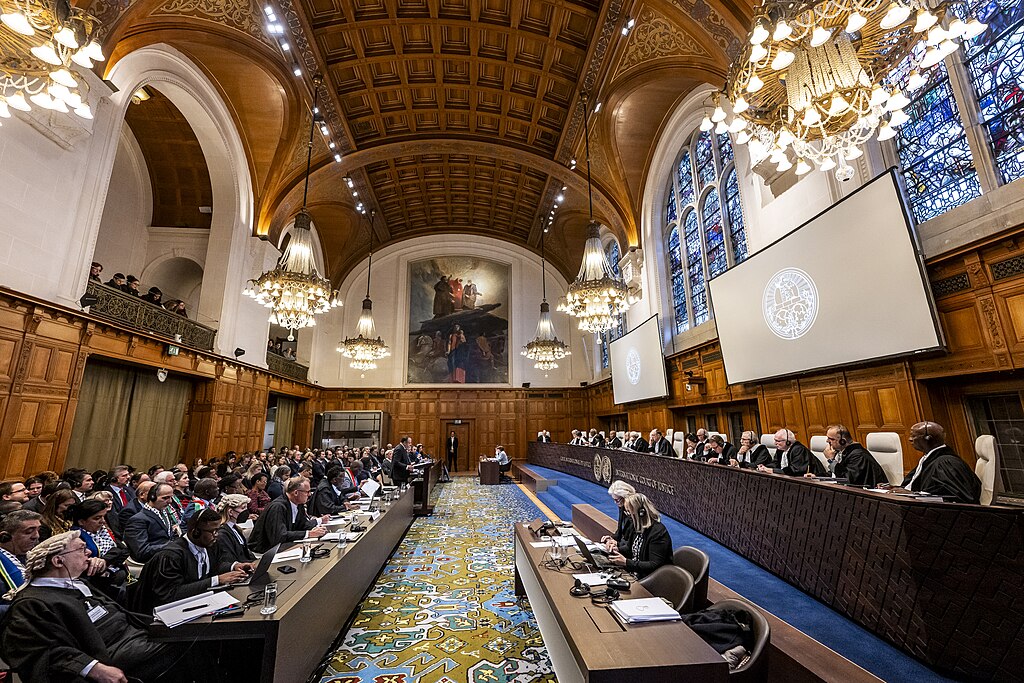
The United Nations (UN) Office for the Coordination of Humanitarian Affairs (UN-OCHA) reported on 19th January 2024 that “between 7 October 2023 and 12:00 on 18 January 2024, at least 24,620 Palestinians were killed in Gaza and 61,830 Palestinians were injured.” According to UN figures, an estimated 16,000 (65%) of the slain are women and children.
The Israeli government considers the South African case to be a form of “blood libel.” But many people around the world believe the Israeli government’s slaughter of Palestinian civilians constitutes genocide. International protests, both on the streets and at the UN headquarters in New York, have been significant. Israel and its traditional allies, especially the US, have started to look increasingly isolated on the world’s stage.
On 26th January the ICJ issued a provisional measures order forbidding Israel or any of its security forces from engaging in any acts that could be identified as components of genocide under the 1948 Genocide Convention. While the order is not a ruling on Israel’s suspected genocide of the Palestinian people, the ICJ did notably remark:
At the present stage of the proceedings, the Court is not required to ascertain whether any violations of Israel’s obligations under the Genocide Convention have occurred. [. . .] [T]he Court’s task [at this stage] is to establish whether the acts and omissions complained of by the applicant [South Africa] appear to be capable of falling within the provisions of the Genocide Convention. [. . .] In the Court’s view, at least some of the acts and omissions alleged by South Africa to have been committed by Israel in Gaza appear to be capable of falling within the provisions of the Convention. [. . .] In the Court’s view, the facts and circumstances mentioned above are sufficient to conclude that at least some of the rights claimed [under the Genocide Convention] by South Africa and for which it is seeking protection are plausible.
In Part 1, we considered the means by which LIHOP was likely facilitated. We showed that a vast body of gathered intelligence was apparently wilfully ignored by the Israel government for at least a year prior to Al-Aqsa Flood. We noted that Israeli defences were removed at the most critical juncture, that key positions were abandoned by the Israeli military, and that the response was delayed due to a seemingly inexplicable lack of preparedness and organisation. Subsequent routine investigations into the alleged security “failures” have been stymied by senior Israeli officials, adding further cause for suspicion.
Though Hamas has been blamed by Israel and its allies for all of the destruction and killing on 7th October, the evidence, as first reported by Geopolitics & Empire, shows that the action of the Israeli defence and security forces contributed to the loss of life to some extent.
In a subsequent report by the Israeli news outlet Yedioth Ahronoth (Ynetnews), the Israeli Defence Force (IDF) admitted that “casualties fell as a result of friendly fire” on 7th of October “in the kibbutzim and southern Israeli communities.” Yet the Israeli military apparently does not believe it would be “morally sound to investigate these incidents due to the immense and complex quantity of them.”
Until the “immense” quantity of these so-called “friendly fire” incident is properly investigated, the number of Israelis killed by their own government will remain unknown. As bereaved Israeli families seek answers, what can be said is that reports and witness testimony from Kibbutzim and the Supernova festival suggest the possibility that a significant proportion of civilian deaths at those locations could have been the result of so-called “friendly fire.”

The only people who could commit the crime of LIHOP treason were those with the opportunity, the means and the motive to do so. This does not mean that thousands or even hundreds of people would have needed to be involved. Compartmentalised authority and obedience to authority would enable a small group of well-placed individuals to control the intelligence analysis and operational decisions that are needed in a LIHOP.
We have already discussed the criminal opportunity and the means in Part 1.
In Parts 2 and 3 we will consider the motives.
The wholesale killing of Israeli citizens and the deaths of Israeli troops and other security personnel, whether at the hands of Hamas or as “collateral damage,” probably served the interests of the LIHOP collaborators.
Maximising civilian casualties could have also been among the perpetrators’ objectives—both to increase public fear and for subsequent propaganda purposes.
There are a number of interested parties, both within Israel and in the wider international community, for whom Al-Aqsa Flood was extremely beneficial. These groups had the means and the opportunity to manipulate Israeli intelligence and perhaps influence its military response.
Now let us unravel why they could have done so.
The Ultra-Zionists’ Motive
Prior to Al-Aqsa Flood, Israeli Prime Minister Benjamin Netanyahu had led four previous coalition governments and was facing three outstanding corruption charges. His bid for re-election in November 2022 and his ongoing legal fight were aided by an Israeli far-right coalition.
Netanyahu brokered a deal between ultra-nationalist and ultra-Zionist factions to secure their support for his 2022 election campaign. Itamar Ben-Gvir and rival far-right leader Bezalel Yoel Smotrich agreed to form a pact, rallying behind Likud’s—and, in particular, Netanyahu’s—bid to regain power.

The cabinet of the 37th Israeli government was eventually formed in December 2022 after Netanyahu convened an extreme right-wing coalition. Ben-Gvir was appointed as Israel’s Minister of National Security. Many Israelis objected to his appointment.
A former lawyer and now member of the Knesset (MK), Itamar Ben-Gvir is the leader of the Otmah Yehudit party. Otmah Yehudit formed in 2012 as “disciples of Kahane.”
Kahanism is the ultra-Zionist political ideology of Rabbi Meir Kahane. It seeks a Jewish theocracy in Israel and the displacement or extermination of all Palestinians. Rabbi Kahane formed the political party Kach in 1971. After his assassination in 1990, the splinter group Kahane Chai formed under the leadership of his son. Both groups murdered and brutalised Palestinians and both were outlawed as terrorist organisations in Israel in 1994.
Another notable Netanyahu appointment was that of Bezalel Smotrich as Minister of Finance in November 2022. Smotrich is the leader of the Religious Zionist Party (RZP). In February 2023 Smotrich was also appointed to the Israeli Defense Ministry and given authority to control the West Bank. For Palestinians, his appointment was a direct threat.

The idea of ethnically cleansing the West Bank—and all Palestinian territories—had been advocated for many years by the Israeli far-right and its leading voices, such as Ben-Gvir and Smotrich. In 2017, Smotrich, who, like Ben-Gvir, is a lawyer by trade, published his political strategy called “Israel’s Decisive Plan.”
Two years earlier, in a 2015 TV interview, Smotrich had evidently recognised that his brand of radical ultra-Zionist extremism was somewhat contradicted by the secularist, political dialogue approach favoured by the Palestinian Authority (PA). The PA’s reasonable commitment to diplomacy contradicted the “existential threat” narrative on which his reactionary politics were based. From his perspective, Hamas Islamist fundamentalism was far more useful:
The [Palestinian Authority (PA)] is a burden and Hamas is an asset. It’s a terrorist organization. No one will recognize it. No one will give it status at the [International Criminal Court]. No one will let it put forth a resolution at the UN security council. [. . .] I don’t think I have to worry about [Hamas].
Smotrich has consistently played up the threat of Hamas. He disingenuously claimed that Hamas refused “to recognize the State of Israel’s fundamental right to exist.” In reality, Hamas has repeatedly shown itself willing to contemplate a two-state solution that would not see Israel destroyed. While Smotrich conceded that “Palestinian nationalism” proposed a Palestinian state “within the 1967 borders,” it was he who rejected the offered “two-state solution,” claiming that wasn’t really what Palestinian nationalists wanted.
Smotrich’s “Decisive Plan” is simple—and chilling:
The Palestinian national movement is a negative mirror image of Zionism. As such, it [Zionism] cannot make peace with it. [. . .] [T]here is room for only one expression of national self-determination west of the Jordan River: that of the Jewish nation. [. . .] Those [Palestinians] who wish to forgo their national aspirations can stay here. [. . .] Those [Palestinians] who choose not to let go of their national ambitions will receive aid to emigrate. [. . .] There will be those [Palestinians] who will continue to choose another “option”—continuing to fight the IDF, the State of Israel, and the Jewish population. Such terrorists will be dealt with by the security forces with a strong hand.
According to Smotrich, Ben-Gvir and other ultra-Zionists, Palestinian sovereignty is a myth that can only be defined by its opposition to Zionism. Smotrich and the RZP assert that any Palestinian who doesn’t flee or give up proclaiming the right for a Palestinian state to exist is a terrorist—and that anyone who supports the Palestinians is likewise a terrorist.
Smotrich clearly articulated his “plan” to deal with the “terrorists,” a label he effectively applied to all Palestinians, in this 2017 statement:
The IDF, thank God, is a strong and astute army, with the will and the capability to defeat the terrorists within a short time frame: killing those who need to be killed, confiscating weapons to the last bullet, and restoring security to Israel’s citizens.
The Israeli government has played down an official government “think-tank” document, apparently written on 13th October 2023, just five days after Al-Aqsa Flood, that proposed the mass displacement of Gazans to the Sinai Desert to live in tent cities. This “suggestion” looked eerily similar to Smotrich’s “Decisive Plan.”

The Israeli far-right ultra-Zionists don’t care about all Jews, let alone all Israelis. Thanks to propping up Netanyahu and Likud, Smotich’s RZP colleague, MK Simcha Rothman, was appointed chair of the Knesset’s Constitution, Law and Justice Committee. Following the Hamas assault Rothman reportedly said:
Jews murdered in the West Bank are more important than Jews murdered in Gaza because the former are right-wing settlers and the latter are left-wing kibbutz members.
This echoes the sentiments of Ben-Gvir. Speaking on Israeli television in August 2023, Ben-Gvir said:
My right, my wife’s, my children’s, to roam the roads of Judea and Samaria [West Bank administrative division] are more important than the right of movement of the Arabs. [. . .] My right for life comes before their right to movement.
I should be noted that Ben-Gvir and other members of the Israeli far right do not represent the views of the Israeli majority. In response to Ben-Gvir’s outburst, MK Karine Elharrar called him “the authentic representative of the most racist, messianic and Kahanist government we’ve ever had.”
In his desire for power, Netanyahu made religious and ultra-Zionist extremists kingmakers. In the months leading up to the Al-Aqsa Flood, he afforded them pivotal political control over the Israeli government, enabling the far right to achieve political authority far beyond its electoral reach.
As a result of Israel’s national security “failure” on the 7th of October, four days later, on the 11th, Netanyahu and National Unity party leader Benny Gantz formed a national emergency government. Yair Lapid, the leader of the official Israeli opposition party Yesh Atid, refused to join the “unity government” in protest over the continued ministerial roles of Ben-Gvir, Smotrich and other far-right politicians.

The formation of the emergency “unity” government eroded some of the far-right’s political influence in the Knesset. But that was of little concern to them compared to what Middle East geopolitical analyst Omri Brinner sees as the Kahanists and the ultra-Zionists longer-term goal of establishing a Jewish theocracy:
Their ultimate goal is to have a very different Israeli state—religious rather than secular—and it starts in the West Bank.
Once his deal with Netanyahu was secured, Ben-Gvir immediately created an Israeli paramilitary National Guard with some 2,000 troops that were independent of the Israeli police. Many Israelis consider the new National Guard to be little more than a well-armed “official” far-right militia.
Following Al-Aqsa Flood, Ben-Gvir created approximately 600 Israeli “community squads“—effectively a citizen’s militia armament program. These squads have supposedly “restor[ed] security to Israeli civilians,” in keeping with Smotrich’s “Decisive Plan.”

Smotrich, too, was quick to exploit Al-Aqsa Flood. He launched an initiative that would displace Palestinians from their agricultural lands during harvest season, thus increasing their economic hardship. He is also calling for so-called “buffer zones” around the settlements to be extended in a move he terms “sterilisation.”
As of 19th January 2024, the UN’s Office for the Coordination of Humanitarian Affairs (OCHA) recorded the following incidents in the West Bank:
Since 7 October 2023 and as of 18 January 2024, 357 Palestinians have been killed, including 90 children, across the West Bank, including East Jerusalem. [. . .] Of the fatalities in the West Bank (357), 348 were killed by Israeli forces, eight by Israeli settlers and one by either Israeli forces or settlers. So far in 2024 (as of 18 January), 48 Palestinians, including nine children, have been killed. The number of Palestinians killed in the West Bank, including East Jerusalem, in 2023 (507) marks the highest number of Palestinians killed in the West Bank since OCHA started recording casualties in 2005.
While the world understandably focuses upon the evident genocide in Gaza, the Israeli ultra-nationalists and Zionists are taking advantage of the situation to strengthen their control of the West Bank. Clearly, both Ben-Gvir and Smotrich are exploiting Al-Aqsa Flood for maximum benefit.
David Ben Zion, who made the false claims of Hamas beheading children (see Part 1), was instrumental in the attack on the Palestinian West Bank town of Huwara. He received direct political support from Ben-Gvir, Smotrich and other far-right politicians. Smotrich said the Israeli state should “wipe out” the 7,000 Palestinian residents of Huwara and not simply leave that task to “civilians” like Ben Zion. Ben Zion is reportedly the leader of the Shomron Regional Council of 35 illegal West Bank settlements. He evidently has close links to the Israeli far right.
As a Deputy Commander in IDF Unit 71 on the day of Al-Aqsa Flood, Ben Zion was among some of the first IDF personnel to arrive at the Kfar Aza Kibbutz, where there was evidence of significant “friendly fire” damage. Ben Zion’s presence at Kfar Aza indicates the possibility that some of the first troops to engage Hamas were ultra-Zionists and supporters of Smotrich’s “Decisive Plan.”
Importantly, far-right forces are known to have held the balance of political power in Israel in the crucial months leading up to the Al-Aqsa Flood. Those forces captured key political positions and made successive policy decisions that undermined Israel’s defence of the Gaza border and its ability to respond to an attack launched from Gaza. The same ultra-Zionist elements were obviously preparing to intensify their illegal settlement expansion in the West Bank.
The ultra-Zionists and the illegal settlement movement have benefited greatly from Al-Aqsa Flood. As pointed out by prominent Palestinian lawyer Diana Buttu:
They’re using violence to take over land and they know no one’s paying attention, because all eyes are on Gaza.
While there is no hard evidence linking Ben-Gvir, Smotrich or other far-right Israeli politicians directly to the Hamas attack, there is considerable circumstantial evidence that warrants further investigation. They had means, opportunity and motive to orchestrate a LIHOP false flag, and their political objectives were definitely forwarded by the Hamas assault.
Hamas’ Motive
The chairman of the political bureau of Hamas and its effective political leader is Ismail Haniyeh. He delivered a speech on 7th October in which he outlined the apparent objectives of the Al-Aqsa Flood operation. Haniyeh spoke about what he called the “fascist government” in Israel and issued a long list of grievances, including Israeli settlement expansion in the West Bank and the Israeli government’s continued detention without trial of Palestinians.
Also, Haniyeh cited the alleged “sadism” of Israel’s genuinely extremist National Security Minister, Itamar Ben-Gvir. Referring to “the Zionist occupation,” Haniyeh spoke about the suffering of the people in Gaza as a result of the Zionists’ actions. He claimed that the Zionist entity had capitalised upon the international community’s preoccupation with the war in Ukraine to increase “aggression, colonisation, arrests and blockade[s].”

Referring to Jerusalem by its Islamic holy name of Al-Quds, the Hamas leader noted that Hamas was aware of Israeli plans to “impose its sovereignty” over the Al-Aqsa Mosque and other holy sites in Jerusalem. According to Haniyeh, the military objective of Al-Aqsa Flood was, in part, to move the battle “to the heart of the Zionist entity.” This would supposedly expose the Israeli Zionist occupation’s weaknesses and encourage the “resistance.” Ultimately, Haniyeh said, the expressed hope was to establish a free Palestinian state:
What happened today reveals the powerlessness of the enemy. Today, the enemy has had a political, military, intelligence, security and moral defeat inflicted upon it, and we shall crown it [. . .] with a crushing defeat that will expel it [the Zionist entity] from our lands, our holy city of Al-Quds, our Al-Aqsa mosque, and the release of our prisoners from the jails of the Zionist occupation.
In Hamas’ original charter (covenant), the “Islamic Resistance Movement” was expressed, first and foremost, as Islam itself but also as “one of the wings of Moslem Brotherhood in Palestine.” However, as Haniyeh indicated, the “resistance” has come to mean more that. One of the Al-Aqsa-Flood objectives, he noted, was to invigorate a wider Arab resistance:
Gaza is the spearhead of the Resistance and has launched this battle, but since it concerns the entire land of Palestine and Al-Quds and Al-Aqsa, it is the battle of the entire Arab-Muslim community. This is why I call on all the children of this community, wherever they may be in the world, to join in this battle. [. . .] I appeal to our Resistance [groups], to our West Bank, to our people, to our Resistance abroad, to our strategic allies, to all the children of this [Arab-Muslim] community: this is your day. We have an appointment with victory, to work together for this grand victory.
Despite being a Sunni Islamist group, Hamas has intermittently been, and is currently, part of the primarily Shia “Axis of Resistance.” The axis is ostensibly opposed to the colonial and neocolonial exploitation of Arab lands and the forced displacement of Arab peoples. It incorporates groups like Palestinian Islamic Jihad and Ansar Allah and Hezbollah. In addition, the “resistance” includes the governments of Iran, Syria and Lebanon.
Other Arab nations, such as Saudi Arabia, though broadly opposed to this axis, have occasionally aligned with “resistance” interests. But the “resistance” has also experienced serious schisms within its ranks.
Many argue that Hamas—a Sunni Islamist organisation—is a stooge of the Shiite Iranian government, since Iran publicly pledges financial support to Hamas. However, even the most hawkish of US thinks tanks, the Council on Foreign Relations (CFR), has conceded that Hamas is no Iranian puppet.
When the US-led coalition sponsored an Islamist insurrection against the Syrian government of President Bashar al-Assad in 2011, Hamas backed these so-called rebels. Initially, the US-led coalition relied quite heavily on its al-Qaeda proxy, which in Syria was, at the time, the al-Nusra Front. But later the Obama administration supported ISIS in order to widen the Syrian and regional conflict. Iran, which backed the Syrian government, withdrew much of its military and financial support from Hamas as a result.
Many of the Sunni Islamist groups operating in Syria on behalf of the US-led coalition—including al Qaeda and later ISIS—were funded by Qatar and other Sunni Arab states, such as Saudi Arabia and the UAE. Collectively they formed a Sunni Arab state alliance against Syria, which undermined the Iranian (Shiia)-led “Axis of Resistance.” By siding with the Sunni alliance, Hamas essentially aligned itself with the Sunni Arab states and the US coalition and the Israeli government interests at the time.
Hamas’ relationship with Tehran deteriorated further when Hamas pulled out of Iran’s HQ in Syria. Iran remained conditionally willing to support Hamas—for its opposition to Israel—but problems persisted. In 2009, senior Hamas official Moussa abu Marzouk reportedly complained bitterly about the lack of Iranian assistance, accusing Tehran of “lying” about its claimed support for Hamas.
Following diplomatic efforts in Lebanon in 2017, Iran restarted full support for and cooperation with Hamas. It seems the deal only proceeded because Haniyeh had defeated Marzouk to become the political leader of Hamas. In return, Tehran waived its demand that Hamas support Iran in its ongoing rift with Saudi Arabia. While Iran has given both financial and military assistance to Hamas, as pointed out by the CFR, Hamas pursues its own interests and is not simply tied to Iranian foreign policy ambitions.
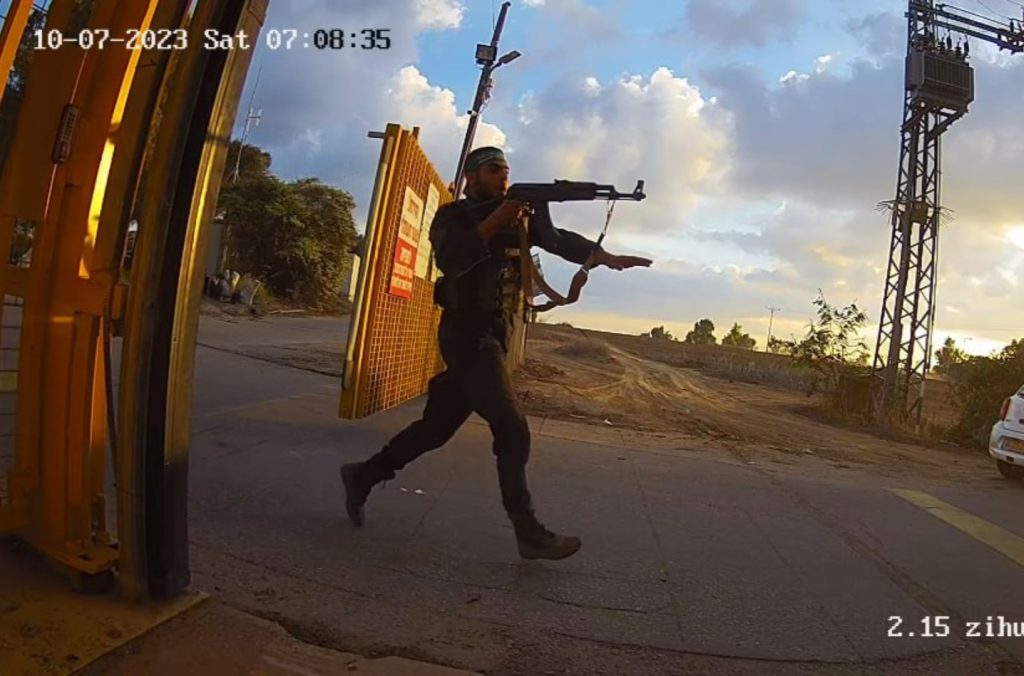
Returning to present-day events: Immediately following Al-Aqsa Flood, the Israeli government condemned Iran for the attack. Specifically, the president of Israel, Isaac Hertzog, and the ambassador-designate to Canada, Iddo Moed, and other senior Israeli officials sought to pin the blame on Iran. Israel’s ambassador to the US, Michael Hertzog, said:
We suspect Iranian hands behind the scenes. As you know, Hamas and Iran are closely tied. [. . .] They are tied in what they call the Axis of Resistance—of course, resistance to the existence of the State of Israel. [. . .] So, as far as we are concerned, this is an Iranian-led coalition, and we suspect that Iran is involved. [We have corrected the punctuation mistakes in the transcript.]
Haniyeh suggested that Al-Aqsa Flood took advantage of a politically weak Israel. This suggestion is in keeping with the cobweb theory of the Hezbollah Secretary-General Sayyed Hassan Nasrallah, who has repeatedly highlighted political, economic and military weaknesses in Israel and has pointed out that “Israel is weaker than cobwebs” and could just be swept aside.
Certainly Al-Aqsa Flood appeared to inflict “a political, military, intelligence, security and moral defeat” upon Israel. But, as we discussed in Part 1, it seems unlikely that Hamas could have achieved such a resounding success were it not for Israel’s apparent assistance. Indeed, in terms of losses, it seems Israel actively contributed to Israeli casualty numbers. If we then also consider that Israel largely created Hamas, the picture becomes even more complex.
Hamas would not exist in its current form were it not for the decades-long support it has received from the Israeli government. Hamas’ frequent attacks on Israel are considered to be evidence of Israeli shortsightedness. Alleged “blowback” has occurred because the Israeli policy of trying to pit secular, nationalist Palestinians [the Palestinian Authority] against religious, Islamist Palestinians [Hamas] has “accidentally” turned Hamas into a significant threat.
Haim Ramon, a former Israeli deputy prime minister and justice minister, reportedly said that Israel and Hamas have an “unwritten pact.” IDF Major General Gershon Hacohen put it this way in a comment he made in 2021:
Netanyahu’s [the Israeli government’s] strategy is to prevent a two-state option, so he has made Hamas his closest partner. Overtly, Hamas is the enemy. Covertly, it’s an ally.
Hamas appears to profit from this “unwritten” relationship in many ways. As we have already discussed, the planning for Al-Aqsa Flood took years, and the necessary logistics involved rules out any notion that Hamas could quickly adjust its operational schedule. If Hamas seized the chance to strike a relatively defenceless southern Israel, the evidence suggests it had advanced knowledge of when that opportunity would arise. Hamas’ losses were seemingly limited; Israeli citizens’ losses weren’t.
Hamas also had domestic political reasons to start a war. Prior to Al-Aqsa Flood, Gazan discontent with the Hamas government was increasing. A sizeable contingent of Palestinians protested against Hamas’ apparent inability to resolve the ongoing energy, food and medicine shortages and to alleviate the endemic poverty. While there are certainly questions regarding who organised the protests, they did appear to have genuine popular support.
Hamas published further claimed justification for Al-Aqsa Flood in January. It offered some convoluted excuses for killing civilians:
Avoiding harm to civilians, especially children, women and elderly people is a religious and moral commitment by all the Al-Qassam Brigades’ fighters. [. . .] [I]f there was any case of targeting civilians, it happened accidentally, and in the course of the confrontation with the occupation forces. [. . .] Maybe some faults happened during Operation Al-Aqsa Flood’s implementation due to the rapid collapse of the Israeli security and military system. [. . .] It is also a matter of fact that a number of Israeli settlers in settlements around Gaza were armed, and [they] clashed with Palestinian fighters on Oct. 7. Those settlers were registered as civilians while the fact is they were armed men fighting alongside the Israeli army. [. . .] When speaking about Israeli civilians, it must be known that conscription applies to all Israelis above the age of 18 — males who served 32 months of military service and females who served 24 months — where all can carry and use arms.
Apparently, Israeli civilians were targeted “accidentally” due to possible “faults” that were somehow caused by Israel’s defensive absence at the time. Some of those civilians were armed. All adult Israeli civilians are legitimate targets, in Hamas’ eyes. So, to say that this claimed rationale is somewhat implausible is putting it mildly. Hamas posted videos on its own channels clearly showing the murder of unarmed civilians. Its attempt to distance itself from those acts now is pure propaganda.
After Israel’s military response to Al-Aqsa Flood, a poll was conducted by the Palestinian Center for Policy and Survey Research (PSR). The results of the poll suggest that support for Hamas has grown considerably among Palestinians both in Gaza and in the West Bank. The survey found:
The war increases Hamas’ popularity and greatly weakens the standing of the PA and its leadership.
This political reaction is a consistent feature of Israel’s relationship with Hamas. Almost without exception, Israeli government responses to Hamas violence strengthens Hamas and weakens the Palestinian Authority (PA). Some observers think this is the reason Israel covertly—or openly, for that matter—supports Hamas.
Haniyeh said one objective of the Al-Aqsa Flood operation was to drive a wedge between Israel and other Arab states for the purpose of upending the “normalisation” of relationship talks between various parties. He said:
What did these defeatists expect, [these Arabs] who have spread the culture of impotence and despair, and wanted the path to normalisation [of relations with Israel] to shape this stage with recognition of the enemy?
The alleged “defeatists” Haniyeh had in mind included the UAE, which, through the 2020 Abraham Accords, attempted a US-backed rapprochement with Israel and recognised Israeli sovereignty. However, the UAE wasn’t the only Arab state lining up to “normalise” relationships with Israel in contravention of Palestinian interests. There is every reason to suspect that Haniyeh’s criticism was also aimed at them. This was further clarified in the later January statement:
[. . .] we call for standing against the normalization attempts with the Israeli entity.
The New Middle East Motive
In the wake of Al-Aqsa Flood and Israel’s suspected genocidal response, a number of theories were put forward positing why Israel, or elements within Israel, might wish to erase the Palestinians, Gaza and the West Bank from the map. Beyond pure Zionist zealotry, these more Machiavellian schemes concern the construction of a “New Middle East” (NME) complete with momentous changes to resource allocation and/or geopolitical influence in the region.
To be sure, we shouldn’t simply dismiss a raw financial motive. But it seems more likely that some investors were aware of the LIHOP operation and simply took opportunistic advantage.
A paper published in early December 2023 by two professors at New York University School of Law and Columbia Law School noted highly unusual investor activity in the days leading up to Al-Aqsa Flood. Some investors and traders appeared to have foreknowledge and effectively placed bets (via short selling) on the likelihood that Israeli exchange traded funds (ETFs) would plummet in value during the precise, narrow window of the initial turmoil following the attack. The paper’s co-authors wrote:
Our findings suggest that traders informed about the coming attacks profited from these tragic events.
The targeted Israeli companies were listed on both the US and Tel Aviv stock exchanges. Israeli legacy media outlets immediately suggested that Hamas—with obvious foreknowledge—had made money from the attack. However, the not-for-profit Financial Industry Regulatory Authority (FINRA) and the US Securities and Exchange Commission (SEC) have access to the data revealing who made the trades. If it were Hamas, it would be very easy to prove their financial crimes. Yet, there has been no announcement of a US investigation, let alone any public attribution of guilt.
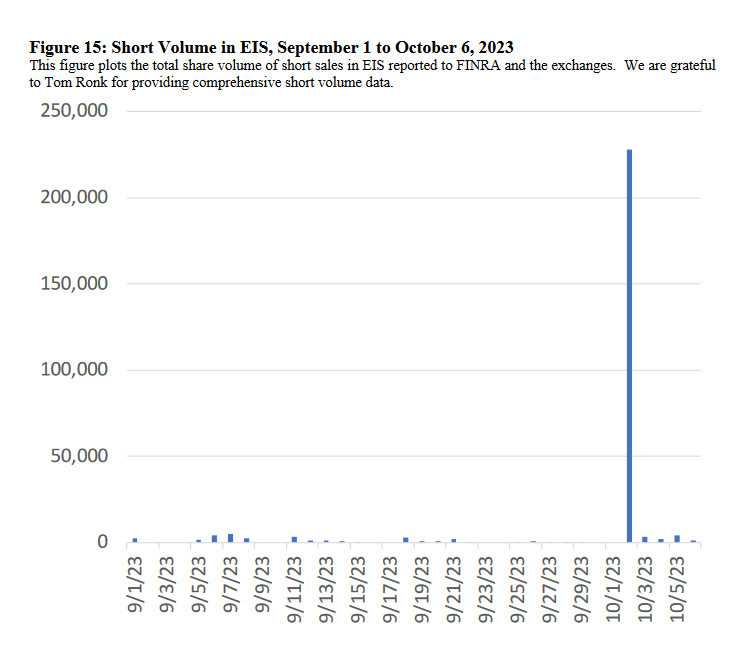
The Western legacy media have reported the inexplicable denials of the Israel Securities Authority (ISA) that there was “no evidence” of financial irregularities surrounding the attack, despite the fact that the two academics have shown very clear evidence of precisely such irregularities.
If we consider the accumulated available evidence, it is reasonable to surmise that investors other than Hamas knew when Al-Aqsa Flood would occur. Nevertheless, a relatively small financial gain does not seem like sufficient motive for such a momentous global event that killed so many.
What, then, could other motivations be for the 7th October attack?
The Gaza Marine gas fields (1 and 2) lie in the Mediterranean territorial waters of the Palestinian Authority (PA). The fields potentially contain up to 1 trillion cubic feet of natural gas and could provide a major boost to Gazans’ energy autonomy and the Palestinian economy. The PA, which was ‘granted’ the right to exercise sovereignty over its own maritime territory by the Oslo Accords in 1995, has been trying to develop the fields since their discovery, in 1999, by British Gas (BG). But Israel has consistently prevented BG’s exploration, development, and installation projects.
In 2007, after Hamas won the Palestinian legislative elections in Gaza, Israel established a militarized naval blockade of the Gaza Marine gas fields. And in December 2008 it illegitimately declared sovereignty over the area, resulting in BG closing its Tel Aviv office.
There is more to this story. There is evidence that strongly points toward NATO-aligned interests orchestrating the sabotage of the Nord Stream pipeline in September 2022. This event, combined with the sanctions imposed on Russia following its entry into the Ukrainian conflict, cut off much of the Russian energy supply to Europe throughout 2023. (That said, Russia has continued to supply Europe with gas, though in greatly reduced amounts of around 40 million cubic meters per day, through Ukrainian transit pipelines throughout the conflict.)
As part of various countries’ attempts, post-Nord Stream, to find alternative energy export routes to Europe, the Israeli government bowed to pressure from Egypt and the US and in mid-2023 and agreed to a deal with the PA to develop the Gaza Marine field with a view to exporting the gas. At the time, Hamas spokesman Ismail Rudwan stressed that the “people in Gaza have the rights to their natural resources.” While the PA technically holds the rights, it does not control the Gaza coastline and cannot assert its rights without agreement from Hamas.
Given these circumstances, some observers have argued that accessing the Gaza Marine gas fields is an obvious reason Israel wishes to destroy Gaza. Consequently, that motive has been suggested as a possible inducement for Israel to carry out a LIHOP false flag with Hamas.
Meanwhile, though, Israel’s attention appears to be more focused upon the Leviathan Gas field off its coast. The Leviathan has a conservatively estimated 22 trillion cubic meters of natural gas. Following Al-Aqsa Flood, Israel announced some disruption to gas exports, but these were primarily from the Tamar field—in which the UAE has a major stake and which mainly supplies gas to Egypt. The assault on Gaza did not stop Israel awarding a further twelve explorations licenses for Leviathan.
While gas from the Gaza Marine fields would potentially be cheaper to develop, due to its closer proximity to the shoreline, Israel doesn’t need it, having become a net gas exporter in recent years. The value of Gaza Marine to Israel is essentially political. Thus, it is difficult to see why the relatively small additional potential profit from Gaza Marine gas, if Israel could secure the rights, would be a motivation for a LIHOP operation.
Strategically, the Middle East is arguably the most important geopolitical region on the planet. Aspects of the different plans for the future of the region have global implications. Broadly speaking, they each portend construction of a New Middle East. The competing NME visions each have their supporters and detractors.
Speaking to the UN General Assembly (UNGA) in September 2023, Benjamin Netanyahu spoke about the magnitude of the NME he and his Zionist and ultra-Zionist supporters—both in Israel and internationally—envisaged. The NME he depicted was based upon a rapprochement process between Israel, the UAE, Jordan, Sudan and Saudi Arabia—a process that began in 2020—combined with the Egypt-Israeli peace treaty of 1979.
Netanyahu’s map showed a future NME with these states operating in partnership. Notably, there was no Palestine shown on the map, and Gaza and the West Bank were entirely erased. Some have claimed that his map appeared similar to the “Greater Israel” described in the 1982 essay published by Israeli Foreign Ministry official and prime ministerial advisor Oded Yinon, commonly referred to as the Yinon Plan.
Other than its boundaries—somewhere along the lines of the lands between the Nile and Euphrates rivers—the Netanyahu-envisioned NME was nothing like the one proposed in the Yinon plan. Yinon favoured a balkanised Middle East controlled militarily and economically by an Israeli empire. For reasons not entirely clear, Israeli imperialism would be unconditionally backed by the US in Yinon’s version of the NME. In many respects, Yinon’s was a rather garbled plan, seemingly based upon wishful thinking rather than realpolitik.
Netanyahu, by contrast, has presented a geopolitical “partnership” model of the NME. It is based on mutual shared economic and strategic interests. This potential partnership could benefit greatly from the proposed India-Middle East-Europe Economic Corridor (IMEC) that would connect Asia, through the Persian Gulf, to Europe. Netanyahu told UNGA that IMEC was “an extraordinary change, a monumental change, another pivot of history.”
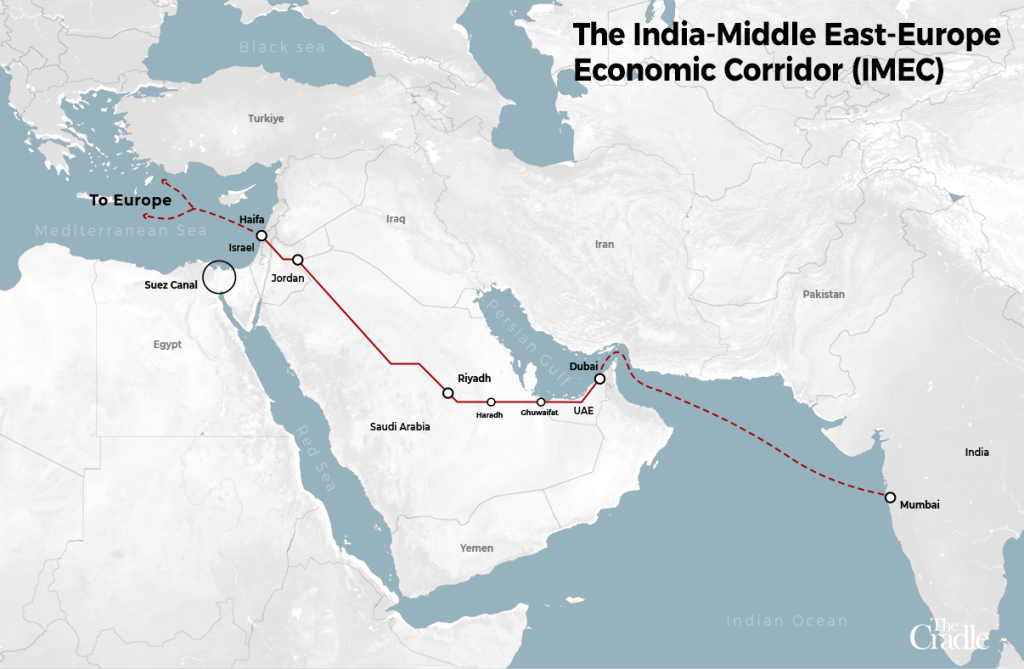
IMEC has been suggested as another possible motive for LIHOP. However, for reasons we’ll discuss shortly, IMEC now looks dead in the water as a result of Israel’s response to Al-Aqsa Flood.
Yet another possible motive for LIHOP is the proposed Ben Gurion Canal in Israel. Running from the Red Sea Israeli port of Eilat (Gulf of Aqaba) to the Israeli Mediterranean coastal city of Ashkelon, the Ben Gurion Canal would rival the Suez Canal, making it another global and Middle East geopolitical game changer.
Around 12% of the world’s trade currently passes through Suez. Shipping goods and commodities and raw materials via the Suez between Europe, Africa and Asia can reduce sailing times by up to three weeks and thus vastly cut related transport costs.
For Western powers, Egypt’s control of Suez is a geopolitical weakness and a possible economic choke point. Given that Egypt, like many countries in the Middle East, has been moving strategically closer to Russia and China of late, the vulnerability of Suez, from the Western perspective, has only increased.
Israeli control of the proposed Ben Gurion Canal would seemingly offer a safer trade route for the West, although continued Palestinian unrest would more than negate this possible benefit for Western powers.
Irrespective of geopolitical sensitivity, Ben Gurion has some practical advantages over Suez. While it would be longer than Suez, it would be cut into hard bedrock instead of desert sand and would consequently require less maintenance. Ships would encounter fewer disruptions and therefore have lower running costs, meaning toll fees could be potentially be lower. It would also be deeper and wider than the Suez and have opposing channels, better enabling two-way shipping for the world’s largest vessels. Many of the traffic-jam problems and associated Suez delays would likely be avoided.
While the planned Ben Gurion Canal route wouldn’t need to flow through Gaza, its close proximity would leave the canal vulnerable to possible rocket attacks and other acts of sabotage should tensions between Palestinian militants and the Israeli government persist.
For these reasons, many suspect that Israel’s flattening of Gaza is intended to facilitate the construction of the Ben Gurion Canal. Yet this project has been practically ruled out—for the time being, anyway—by Israel’s military response to Al-Aqsa Flood.
To explain: Netanyahu was advocating an NME at the September 2023 UN General Assembly on the back of the Abraham Accords and Israel’s extant peace treaty with Egypt. But he was also hedging his bets that the so-called “normalisation” process between Saudi Arabia and Israel would continue as planned. He had every reason to suspect that it wouldn’t.
Like the Abraham Accords before it, the potential US-backed agreement between Saudi Arabia and Israel would strengthen the Israeli strategy of isolating the regional influence of Iran and further diminish Palestinians hopes of independence. But in August, one month before Netanyahu started selling his NME dead duck at the UNGA, this aspect of the Israeli strategy had already been seemingly delivered the coup de grâce by a Chinese government-brokered deal between Saudi Arabia and Iran.
Hamas opposed Iran’s antagonistic stance toward Saudi Arabia in 2017 because Saudi Arabia had been instrumental in leading the 2002 Beirut Summit of the Arab League to adopt the policy of “normalisation” with Israel. In return for a withdrawal from Gaza, the West Bank (including East Jerusalem and the Syrian Golan Heights), the Arab League, a Sunni-led regional organization of Arab states, declared it would maintain “a just and comprehensive peace” with Israel if Israel recognised Palestinian sovereignty. At the time, Hamas backed the Arab League’s “normalisation” initiative, for obvious reasons.
The Arab League is economically and politically dominated by Saudi Arabia and the UAE. Both of these regional powers are fiercely opposed to the Muslim Brotherhood, to which Hamas and its backers in Qatar are closely aligned. When the UAE signed the Abraham Accords in 2020, it undermined the Arab league normalisation process, sidelined the issue of Palestinian rights, and was viewed as a betrayal by both Hamas and the Palestinian Authority (PA).
The PA sought condemnation of the Abraham Accords from the Arab League. Instead, an alliance of Saudi Arabia, the UAE, Jordan, Egypt and Bahrain defeated the PA motion. Hamas stated that the Arab League’s refusal to condemn the Abraham Accords constituted “a clear abandonment by the Arab League of its position at the Beirut summit, which stipulated Palestinian rights before normalisation.”
Already angered by the UAE signing of the Abraham Accords and hoping to deter any further moves by Saudi Arabia toward partnership with Israel, Hamas, despite its difficult relationship with Riyadh, sent a senior delegation to Saudi Arabia in April 2023 in an effort to repair its own diplomatic ties and bolster the prospects for successful completion of the Chinese-backed Iran-Saudi deal.
Yet, despite the aforementioned Iran-Saudi agreement in August 2023 (which was not welcomed by Israel) and after Netanyahu’s UNGA speech in September, the Saudis were continuing to pursue US-backed normalisation with Israel. The PA, under Mahmoud Abbas, appeared to be on board with the idea.
While the Saudis and the PA said the Palestinian issue remained “important,” Saudi Arabia’s real focus was on leveraging the deal to secure US agreements on the development of the Saudi nuclear energy program and a NATO-level mutual defence agreement and unfettered Saudi access to the US’s advanced weaponry.
Given that this was all progressing outside of the “normalisation” process outlined in Beirut in 2002, and given that the wider Arab commitment to Palestinian rights was therefore not guaranteed, the prospect of Saudi Arabia also recognising Israeli sovereignty without any firm agreement on Palestinian rights was in sight.
The IMEC and the Ben Gurion Canal projects have been derailed by Israel’s plausibly genocidal attack on the Palestinians. It is now practically unthinkable that the Arab states will normalise trade relations with Israel without settlement of the Palestinian issue. The 7th October affair and its aftermath appears to have ended any prospect of the New Middle East proposed by Netanyahu to the UNGA.
While it is entirely possible that “Western” globalist interests trying to remodel the Middle East may have exploited the “normalisation” process and seized the opportunity to support Israeli LIHOP operation—in order to ignite the transformation—Israel’s subsequent actions have undermined any such ambition.
The collapse of Netanyahu’s UNGA NME vision seemingly contradicts the notion that a LIHOP operation could potentially have been backed the Western-centric globalists. While a simple failure to achieve the objectives of such a LIHOP operation remains a possibility, there are other evident motives for globalists—from all corners of the Earth, including the West—to support an Israeli LIHOP in an attempt to forge an entirely different NME model.
The common assumption is that a possible Israeli LIHOP operation only serves Western interests if it delivers the NME depicted by Netanyahu at the UNGA. But this analysis is based upon two possibly faulty assumptions.
It assumes that Netanyahu’s New Middle East is the only version of NME on the table, which it isn’t. And it assumes Israel and some Western-centric interests are not aligned with the alternative, which they are.
The hypothesis we are about to discuss is going to take us to a very dark and unpleasant place indeed. But that shouldn’t deter us from going there. Which is what we’ll do in Part 3.

